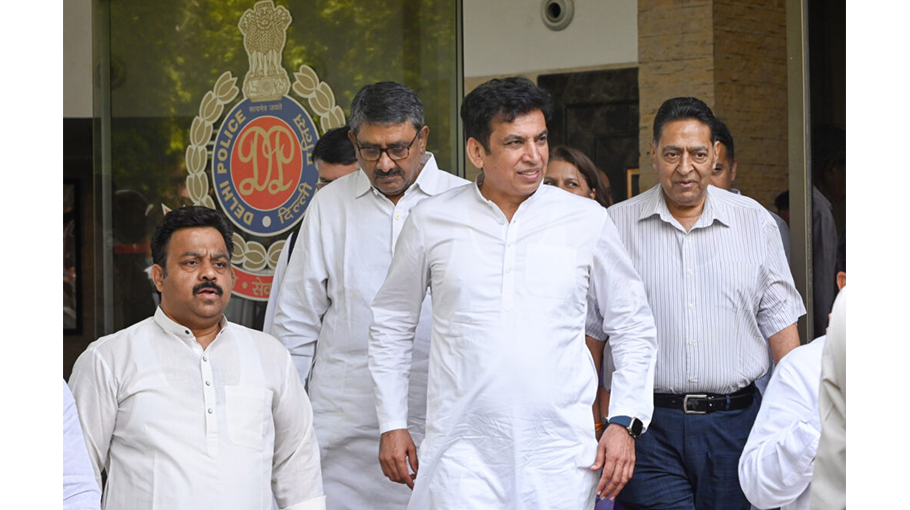Are social media, AI, and misinformation undermining Indian democracy?

Social media platforms have become a ubiquitous part of Indian election campaigns, as political parties and their leaders seek to directly connect with their followers, bypassing traditional news gatekeepers, such as journalists. In the process, misinformation, manipulated messages, malicious claims and AI-enabled fabrications are being circulated online with impunity.
Direct communication with nearly 970 million eligible voters is facilitated by an extensive online campaign aimed at engaging with over 750 million active internet users in India. Of these, 362 million use Meta’s Instagram, around 467 million Indians are active users of Google’s video platform YouTube and over 535 million use Meta’s WhatsApp.
Instagram features AI generated memes posted by various political parties, discrediting opposite parties’ track records. YouTube hosts hundreds of online-only Indian news channels and WhatsApp groups are abundant, with the ruling Bhartiya Janata Party (BJP) managing over five million groups to spread its election message.
After winning the national elections in 2014 and 2019, Prime Minister Narendra Modi and the BJP still dominate the social media race in 2024. The BJP has over 7.8 million followers on Instagram, while opposition parties such as the Indian National Congress (Congress) and the Aam Aadmi Party have 4.6 and 1.3 million followers respectively. On YouTube, Modi has over 23.3 million subscribers, the highest for any political leader in the world. The Congress party leader, Rahul Gandhi, has 4.72 million subscribers.
YouTube also plays an important role in disseminating political news, hosting hundreds of legacy media channels and online-only news channels. One of the top 20 news channels on YouTube, NMF News, has roughly 18.4 million subscribers and over 8 billion views. Its bureau chief in Jharkhand recently acknowledged that the channel could be ‘sometimes right-wing’ in its approach. One of the fastest growing Indian YouTube news channels, Ravish Kumar Official, was launched in November 2022 by journalist and media personality, Ravish Kumar. It has over 10.2 million subscribers and over 1.1 billion views.
As the 2024 General Election began, the BJP’s IT cell sent a personalised ‘letter from the prime minister’ to its millions of WhatsApp groups. In the letter, the government highlighted its achievements and sought voter feedback.
Opposition leaders have since flagged the move with the Indian Election Commission, urging them to act against what it says was a ‘blatant violation’ of the code of conduct for parties and candidates that the Commission is supposed to enforce.
Most voters are members of multiple WhatsApp chats, often with family, friends, faith, work or school groups. These WhatsApp groups exchange encrypted, but unverified information such as AI-generated fabrications known as ‘deepfake’ videos. Already, several examples of synthetic and realistic deepfakes of politicians and celebrities that slander political opponents and support their favoured politicians have surfaced.
Creators of these synthetic multimedia products are in demand. Some have been asked to revive deceased political leaders or create one-on-one phone calls with chatbots that synthesise tailored responses.
With recent technological advances, political parties themselves can also create deepfakes by using voice training models that strategically clip videos and speeches to create fake news for online distribution.
The Election Commission of India has warned political parties against misusing AI-based tools to create deepfakes and distort information during election campaigning.
The sheer size of the online userbase paired with the magnitude of information distributed on social media platforms in India makes it extremely difficult to stop the distribution of misinformation. As such, a concerted effort must be made by all stakeholders, including social platform owners, political parties, fact-checkers and voters themselves to counter this trend.
Facebook has a process in place to assess political ads on its platform but ads are often placed online by shadow accounts, allowing candidates and parties to deny responsibility for content that violates the Election Commission’s guidelines on hate news and misinformation. While Meta has been criticised for not enforcing its own policies, YouTube has also approved election-related ads in prominent Indian regional languages that contain material the company explicitly prohibits. This raises questions about Meta and YouTube’s capacity to vet fake narratives on their platforms.
Political campaigning in India is a complex and expensive exercise. The BJP, the Congress and prominent regional parties spend significantly on digital media, including advertisements on Google and Meta. It is expected that, of the Rs 3000–4000 crore (US$359–479 million) spent on advertising during 2024 national and state elections in April–May, about 60 per cent will be spent on digital media.
Dr Usha M Rodrigues is Adjunct Senior Research Fellow at Charles Sturt University, Australia.
Source: East Asia Forum




